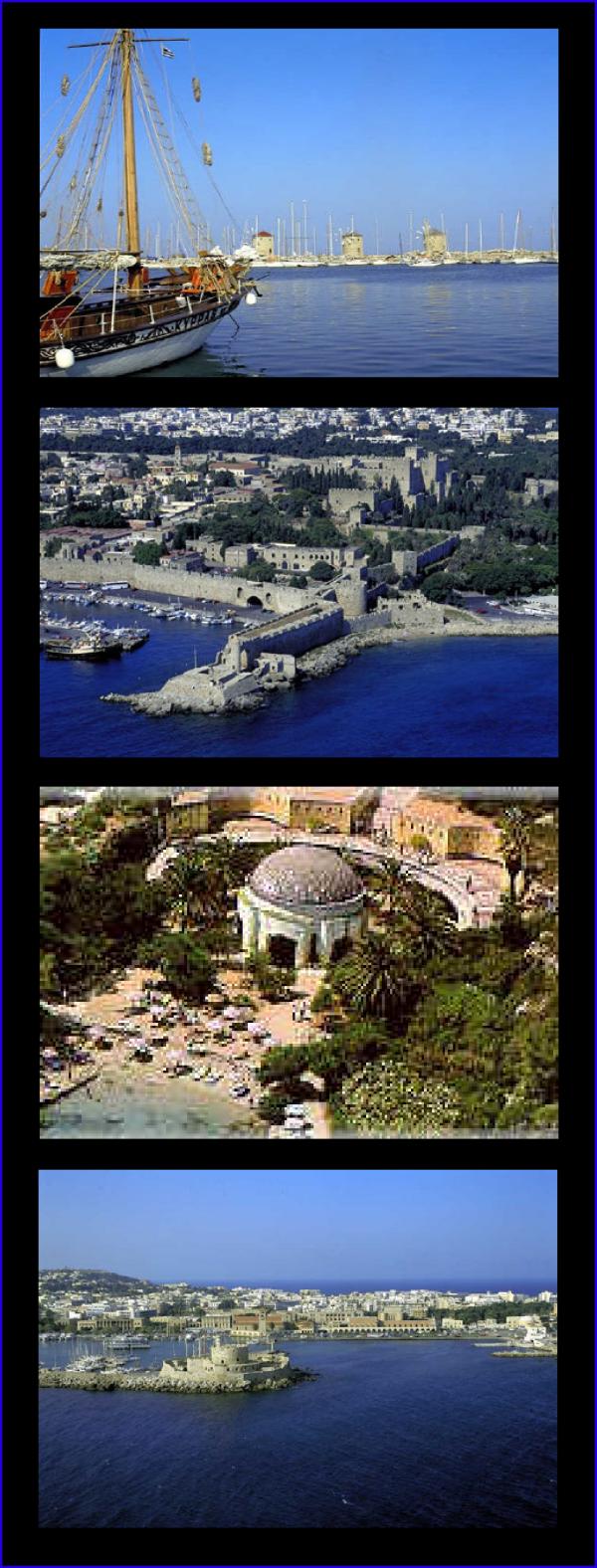Home
Scope
Location
Speakers
Program
Abstracts
Author index
Organizing Committee
Scientific Committee
Venue & Accomodation
Registration
News
Contact

|
 |

Program
All days
| Sunday | Monday | Tuesday | Wednesday | Thursday | Posters | hide abstracts
 Day 5: Thursday morning, September 7, 2006
Day 5: Thursday morning, September 7, 2006
Session 7 Applications to complex materials: glasses, micelles, colloids, blends, interfaces
Chair: V.G. Mavrantzas
08:00
Ergodicity-breaking in glassforming liquids (and related systems), and relaxation processes below the glass temperature, Tg
C.A. Angell
Dept. of Chemistry and Biochemistry, Arizona State University, Tempe, AZ 85287-1604, USA
We first discuss briefly the factors that frustrate the drive to crystallization below the melting point in certain substances called ''glassformers'', thereby permitting long-lived supercooled liquid states. We then consider how to predict the temperature at which such metastable liquids will become glasses during steady cooling (the ergodicity-breaking criterion). In the state of ''broken ergodicity'', there are various dynamic processes that are of interest. Firstly, we consider the primary (structural) relaxation process. Below their Tg systems evolve (''age'', or ''anneal'') at rates determined by their thermal history - which are predictable if the departures from equilibrium are not too great. Secondly we consider processes which are only weakly coupled to the primary relaxation, hence remain active even when the primary relaxation is completely frozen. Examples are the diffusion of small cations responsible for superionic conductivity in inorganic glasses, and the motion of molecules that cause most polymers, glassy or otherwise, to be permeable to gases. These subsystems have their own quasi-equilibrium states which can be lost below their own ''mobile species glass transition''s. Below this subsystem Tg, a new and mostly unexplored sort of ageing behavior can be observed.
08:50
Entropy production of oscillatory flows between parallel plates
M. Lopez de Haro1, S. Cuevas1, M.A. Olivares-Robles2, F. Vazquez3
1 Centro de Investigacion en Energia, UNAM, Temixco, Morelos 62580, Mexico
2 Seccion de Investigacion y Posgrado, ESIME-Culhuacan, IPN, Mexico D.F.
3 Facultad de Ciencias, UAEM, Cuernavaca, Morelos 62209, Mexico
The heat transfer problem of a zero-mean oscillatory flow of both a Newtonian and a Maxwell fluid between infinite parallel plates with boundary conditions of the third kind is considered. With the analytic solutions for the velocity and temperature fields at hand, the local and global time-averaged entropy production are computed. The consequences of convective cooling of the plates are assessed for this problem.
09:15
A thermodynamically consistent model for the thixotropic rheological behavior of concentrated colloidal star polymer solutions
A.N. Beris1, D. Vlassopoulos2
1 Department of Chemical Engineering, University of Delaware, Newark, Delaware 19716, USA
2 Foundation for Research and Technology - Hellas (FORTH), Institute of Electronic Structure & Laser, and University of Crete, Department of Materials Science & Technology, P.O.Box 1527, Road to Voutes, Vasilika Vouton 71110 Heraklion, Crete, Greece
In this work we report a new model for the rheological thixotropic behavior of colloidal star polymer solutions. Given the excellent capabilities of controlling the molecular structure star polymers constitute an ideal system for exploring the soft matter rheology. The stars exhibit dual, colloidal and polymeric, behavior manifested in several physical properties and in particular their relaxation and flow. Detailed optical and rheological experiments have revealed the interplay between their molecular microstructure and their macroscopic rheological properties often characterized by viscoplasticity (yield stress) and thixotropy (time dependent rheological behavior) [1]. In the present work we use them as a model system in order to better understand thixotropy. Thixotropy is typically modeled phenomenologically as a structurally-dependent viscoplastic behavior [2]. However, the resulting models are often restricted to simple shear flows and are not presented in a form that can be shown do be consistent with nonequilibrium thermodynamics. In the present work we present a new thixotropy model for a well defined system of colloidal star polymer suspensions that is based on previous ideas from the description of polymeric liquid crystals and viscoelasticity. As a result, the model is presented in a thermodynamically admissible form, which is also generally applicable to arbitrary flows. In addition, the model parameters are connected to the system's molecular microstructure. A comparison of the model's predictions against steady and transient rheological viscometric data as well as some optical (DLS) experiments allows for the first time a direct connection of rheology to the system's microstructure for a system exhibiting yield stress and thixotropy.
[1] E. Stiakakis et al., PRE, 66, 051804 (2002)
[2] A. Mujumdar, A.N. Beris and A.B. Metzner, J. Non-Newtonian Fluid Mech., 102:157-178 (2002)
09:40
Extrudate swell control by balancing short and long polyethylene chains using multi-scale modeling
C.F.J. den Doelder
Dow Benelux B.V., P.O. Box 48, 4530AA, Terneuzen, The Netherlands
The presentation first introduces the current trends in complex fluids modeling at Dow. Second, as an example, a multi-scale modeling based polymer design study is presented. Designed molar mass distributions enabled from polyethylene synthesis capabilities are fed to a double reptation mesoscale model to derive polymer elasticity. The calculated compliance is used as correlator to extrudate swell, improving on existing empirical correlations. The correlation comprises a connection between linear viscoelasticity and non-linear complex processing behavior. Its validity is made plausible from the related dynamics of recovery after deformation, but an intriguing timescale mismatch needs to be bridged. Non-equilibrium thermodynamics might provide theoretical tools to build this bridge.
10:05 Coffee break 10:20
Flow of Polymer blends between Concentric Cylinders
M. Dressler1, B.J. Edwards2, E.J. Windhab1
1 Institute of Food Science and Nutrition, ETH Zurich, Switzerland
2 Department of Chemical Engineering, University of Tennessee, Knoxville, TN 37996-2200, USA
A thermodynamically consistent model for polymer blends with matrix phase viscoelasticity and break-up/coalescence is solved for laminar flows in the gap between concentric cylinders. The model has been developed using a Hamiltonian framework of non-equilibrium Thermodynamics. The model is solved for Poiseuille (axial), Couette (angular), and mixed Couette-Poiseuille (helical) flow to understand qualitatively viscometric material properties and droplet deformation in non-homogeneous shearing flows. Therefore, the model equations are formulated in terms of a two-point boundary value problem and a shooting algorithm is adopted to compute the non-linear flow fields together with the elastic stresses, the droplet shapes, and the break-up/coalescence rates in the gap. We investigate the profiles of the stress tensor components in connection with the droplet characteristics, we valuate viscometric material functions at the wall, and we discuss the narrow gap approximation. Moreover, we examine the influence of centrifugal forces on the flow behavior, and in particular on the break-up/coalescence rates in the gap for the three flows.
10:45
On the rheology of a dilute suspension of vesicles
C. Misbah, G. Danker
LSP, Univ. J. Fourier, Grenoble I andCNRS, BP 87, 38402 Saint Martin d'Heres, France
From the hydrodynamical equations of vesicle dynamics under shear flow, we extract a rheological law for a dilute suspension. This is made analytically in the small excess area limit. In contrast to droplets and capsules, the rheological law obtained here is, apart from an objective derivative, nonlinear even to the first leading order. We exploit it by evaluating the effective viscosity ηeff and the normal stress differences N1 and N2. We make a link between rheology and microscopic dynamics. For example, ηeff is found to exhibit a cusp singularity at the tumbling threshold, while N1,2 undergoes a collapse.
11:10
Atomistic molecular dynamics simulation of the temperature and pressure dependences of local and terminal relaxations in cis-1,4-polybutadiene
G. Tsolou, V.G. Mavrantzas
1 Department of Chemical Engineering, University of Patras, GR 26504, Greece
2 Institute of Chemical Engineering and High-Temperature Chemical Processes (FORTH-ICE/HT), Patras GR 26504, Greece
We have explored features of local and terminal relaxation in cis-1,4-polybutadiene (cis-1,4-PB) over a wide range of temperature and pressure conditions by conducting atomistic molecular dynamics simulations (MD) with a united atom model on a 32-chain C128 cis-1,4-PB system [1]. Segmental relaxation was analyzed in terms of the dipole moment time autocorrelation function (DACF) of the simulated polymer. By Fourier transforming the DACF, the dielectric spectrum was computed and the validity of the time-temperature and time-pressure superposition principles were checked to decide for the appearance or not of additional relaxation mechanisms at low enough temperatures or high enough pressures. The relative contribution of thermal energy and volume to segmental relaxation was also calculated and evaluated in terms of the ratio QV/QP [2]. In contrast to experimental studies in other polymers [3], our results support that, in the temperature and pressure range studied, segmental and chain relaxations are influenced similarly by pressure and temperature variations. Further information about the dynamics of the intermediate chain segments has been extracted through the calculation of the dynamic structure factor. Current efforts focus on the determination of characteristic relaxation times in cis-1,4-PB and their variation with density or temperature and pressure, separately.
[1] G. Tsolou, V.A. Harmandaris, V.G. Mavrantzas, Macromol. Theory Simul. 15, 381 (2006).
[2] G. Tsolou, V.A. Harmandaris, V.G. Mavrantzas, J.Chem.Phys. 124, 084906 (2006).
[3] G. Floudas, T. Reisinger, J. Chem.Phys. 111, 5201 (1999).
11:35 Discussion
V.G. Mavrantzas 12:00 Lunch 14:00 Discussion - Closing remarks
V.G. Mavrantzas 15:00 End of workshop day 5/5 |
 |
 |




